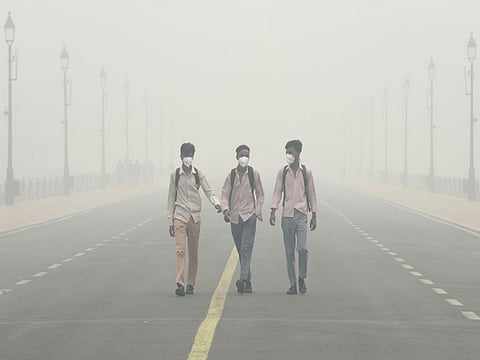

NEW DELHI: A new analysis shows that in northern India, including Delhi-NCR, severe air pollution has been linked to climate change impact. Climate change has altered weather patterns such as the absence of winter rain which is contributing to declining air quality over Indo-Gangetic Plains (IGP), including the national capital region.
Climate experts say global warming will lead to more dry and stagnated winter days ahead. Experts are worried over the fact that despite a massive dip in stubble burning incidents the AQI remained record high.
Precipitation is also the natural way of washing out pollutants from the atmosphere. However, rains have remained absent so far in the season. Delhi has recorded no rainfall from October 1 to November 19.
“We usually witness such foggy conditions over the northern plains by the end of November or early December. In this season, initially, the easterly winds and then the passage of western disturbances, though feeble, kept infusing moisture over the plains at regular intervals, paving the way for favourable conditions for the formation of smog,” said Mahesh Palawat, Vice President, Meteorology and Climate Change, Skymet Weather.
Climate Trends, a Delhi-based environmental consulting organisation, analysed that climate change may extend the impact of winter stagnation on the number of days in Indo-Gangetic Plain that leads to an increase in PM2.5 of ~7 ug/m3 in a high-warming and high-aerosol scenario.
It states that during winters, climate change-induced reductions in surface wind speed are significant in the IGP, contributing to an increase in weak dispersion days—and thus more stagnation days. Stagnation in winter days limits the atmospheric ability to vertical mixing of particulate matter.